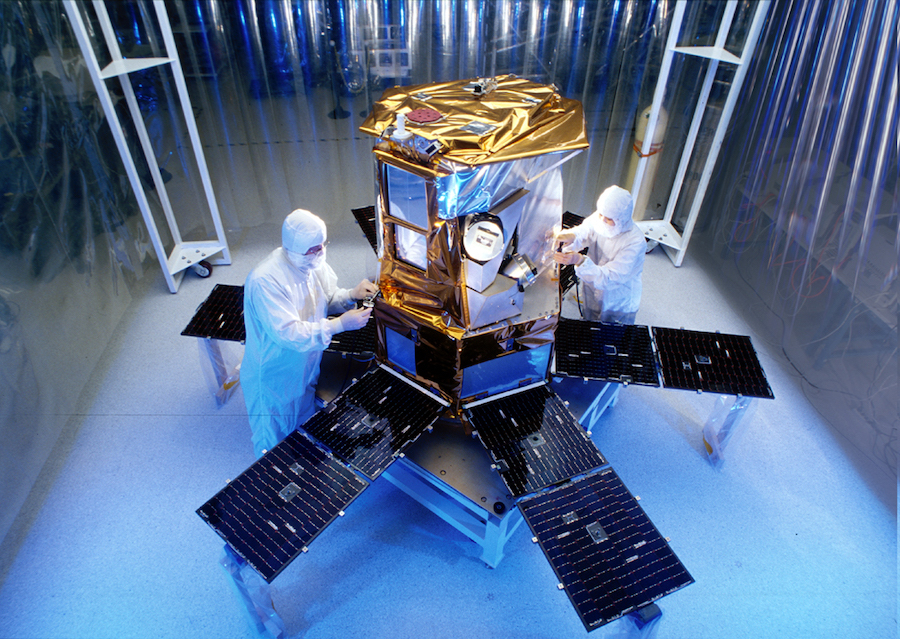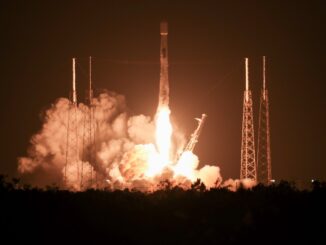EDITOR’S NOTE: Updated April 13 to include mention of the University of Colorado’s role in the mission.

NASA has shut down a spacecraft that measured the amount of solar energy entering Earth’s atmosphere for 17 years, more than three times the mission’s original design life.
The Solar Radiation and Climate Experiment, or SORCE, mission ended Feb. 25 after the spacecraft labored through battery problems for years until NASA could launch a replacement.
SORCE’s four science instruments monitored the amount, spectrum and fluctuations in solar energy entering Earth’s atmosphere, according to NASA. Measurements of the solar energy, called solar irradiance, helps scientists understand how much variations in the sun’s output are responsible for Earth’s changing climate.
“These measurements are important for two reasons,” said Dong Wu, project scientist for SORCE at NASA’s Goddard Space Flight Center. “Climate scientists need to know how much the sun varies, so they know how much change in the Earth’s climate is due to solar variation.
“Secondly, we’ve debated for years, is the sun getting brighter or dimmer over hundreds of years? We live only a short period, but an accurate trend will become very important,” Wu said in a statement. “If you know how the sun is varying and can extend that knowledge into the future, you can then put the anticipated future solar input into climate models together with other information, like trace gas concentrations, to estimate what our future climate will be.”
NASA says that greenhouse gas emissions coming from human activity has had more than 50 times the influence of the slight increase in solar energy in causing warming temperatures on Earth since 1750.
Built by Orbital Sciences Corp., the SORCE spacecraft flew into orbit Jan. 25, 2003, on an air-launched Pegasus XL rocket dropped over the Atlantic Ocean east of Florida.
The mission was designed to last at least five years, but SORCE accumulated 17 years of measurements before NASA ended spacecraft operations in February.
The SORCE mission was led by Tom Woods, the principal investigator from the University of Colorado’s Laboratory for Atmospheric and Space Physics, LASP. Mission controllers operated the satellite from a LASP facility.
SORCE provided more accurate measurements of solar irradiance than previous space missions.
“The mission length also enabled valuable measurements during two of the sun’s 11-year cycles,” wrote Eric Moyer, deputy project manager for NASA’s Earth science mission operations. “SORCE data provide a unique understanding of how the flow of energy from the sun varies and how these variations impact Earth’s weather, climate systems, and, ultimately, all life on Earth that depends on solar irradiance.”
Eight years into the mission, SORCE suffered from battery degradation that began to impact operations. The battery issues eventually prevented SORCE from full-time measurements, and ground teams switched to a daytime-only observations.
The change effectively allowed SORCE to operate with no functioning battery, keeping the mission going until a replacement could be developed and launched. NASA’s Glory spacecraft, which would have continued SORCE’s observations, was lost in a launch failure in 2011.
A stopgap solar irradiance instrument launched in 2013 on a U.S. Air Force satellite, but a full replacement for SORCE did not launch until December 2017, when the Total and Spectral solar Irradiance Sensor was delivered to the International Space Station.
The TSIS 1 instrument outside the space station extends the continuous the record of total solar irradiance data collected by space missions since 1978.
After a period of overlapping measurements with TSIS 1, NASA decided to turn off the aging SORCE spacecraft in February. Controllers powered off the spacecraft’s instruments, and disabled the satellite’s reaction wheels and radio communication systems.
NASA says the SORCE satellite, which does not have its own propulsion system, is projected to re-enter the atmosphere in 2032. Most of the spacecraft is expected to burn up during re-entry.
Email the author.
Follow Stephen Clark on Twitter: @StephenClark1.



